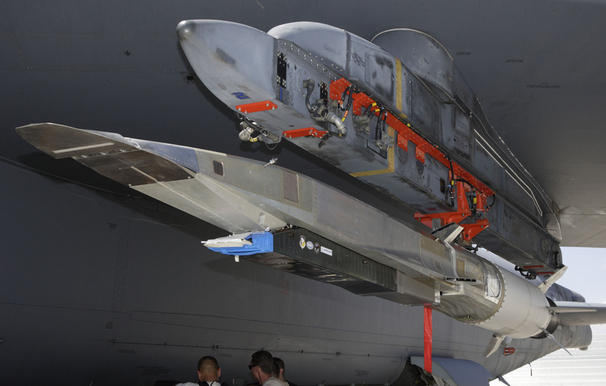Mach 6 Test Flight Fails

A U.S. military test of an experimental hypersonic aircraft failed Aug. 14. The craft, an unmanned X-51A WaveRider, was supposed to fly for five minutes at 3,600 mph — about six times the speed of sound, or Mach 6. Instead, the WaveRider plunged into the Pacific Ocean 15 seconds into its flight, according to a statement from the Wright-Patterson Air Force Base in Ohio.
Officials identified a fault in one of the WaveRider's fins, which caused the WaveRider to lose control after it separated from its booster rocket. Its Scramjet engine, which is designed to take it to Mach 6 while pulling in air to create more thrust, never lit. The aircraft broke into pieces and fell into the ocean near Point Mugu northwest of Los Angeles, a Wright-Patterson spokesman told Reuters.
"It is unfortunate that a problem with this subsystem caused a termination before we could light the Scramjet engine," Charlie Brink, the X-51A program manager for the Air Force Research Laboratory, said in the Wright-Patterson statement. "All our data showed we had created the right conditions for engine ignition and we were very hopeful to meet our test objectives."
The Los Angeles Times reported in detail on this planned WaveRider test on Aug. 13. The test was to be the third trial flight for this craft. In 2010, the WaveRider flew at 3,500 mph for 143 seconds. In 2011, its second test flight ended prematurely, when it failed to switch to its main fuel source.
Experts the LA Times talked to said that hypersonic technology that can fly at least five times faster than the speed of sound is important to the next generation of missiles, military aircraft, spacecraft and passenger planes. The U.S. military hopes to develop non-nuclear missiles that can reach any target around the world in an hour, Reuters reported. Because of hypersonic flight's promise, the Pentagon has invested up to $2 billion on related research, with the WaveRider program costing an estimated $140 million, the Times reported.
The Air Force Research Laboratory now has one X-51A aircraft left, after testing three. Lab officials have not yet decided whether to test the remaining craft, according to Wright-Patterson.
Sources: Wright-Patterson Air Force Base, Reuters, Los Angeles Times
Get the world’s most fascinating discoveries delivered straight to your inbox.
This story was provided by InnovationNewsDaily, a sister site to LiveScience. Follow InnovationNewsDaily on Twitter @News_Innovation, or on Facebook.



